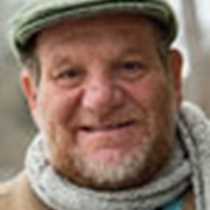During the evening we traveled further up the Ucayali, one of the many tributary rivers that form the mighty Amazon. Here the current is much less obvious because the river has widened a considerable distance. There is also much less terra firma and we are exploring the flooded forest deeper in the upper Amazon Basin. We had an early morning start in order to be out just after sunrise when the wildlife would be most active, and the early wake-up was well worth the effort. We would be heading to Belluda Caño to explore the narrow waterway, but first a stop along the main river to try to find blue and yellow macaws. When we arrived at the place where some dead palm trees were used as nest sites for the magnificent birds all was quiet. Slowly we motored along the shore searching the treetops for any sign of our prey. We all were a little worried our quest would be in vain when all of a sudden the macaws arrived with a raucous call as if to tell us, “Yes we are late, but we are here now so let's get on with it!” Watching them fly is like watching a palette of watercolors paint a swarth of color across the forest.
After our experience with the macaws, we headed into Belluda Caño to begin our search for more wildlife.
Everyone was in awe of our skiff drivers and local guides' ability to spot wildlife as we motored down narrow waterways. All of a sudden, our driver brings the boat to a halt and points to an area in the forest. To us, it is a jumble of leaves and branches, but after a period of coaching we are able to discern a small face peering out of the forest and watching what we are doing. It is a night monkey, very small, dark in color, and looking like everything else in the forest. It was hiding in a small hole high up in the side of a tree. It is the only nocturnal monkey in the world and extremely difficult to find, but somehow, our driver saw, and now we have him in the sights of our binoculars and cameras. A true prize for any naturalist exploring the rain forest.
Our second outing in our skiffs brought us deeper into the flooded forests and finally to a fairly large oxbow lake. An oxbow lake is one created when the river cut itself off and left behind a lake. The rivers here are constantly doing this because the topography is so flat and the slope that causes the water to head to the ocean is so slight. When we got to the lake we approached a short tree and found as many as 100 sand colored night hawks. These are as you may guess, a sandy colored bird about the size of a robin that are active at night when they take to the sky to hunt insects. As we approached they took to the air and fluttered around us. It was like being surrounded by butterflies.
We stayed extra long out on the water because our target this evening was caiman. There are two species here, the white (or spectacled) caiman, and the much more rare black cayman. My boat was lucky enough to spot a small black cayman just before dark, but it vanished out of sight in no time at all. As darkness fell a spotlight was brought out and our guide and boat driver searched the riverbanks for red eye shine, a sure giveaway of the location of the caimans we saw. Being in the forest at night is so different from our day excursions, and all of us were quite pleased with our nighttime journey.







